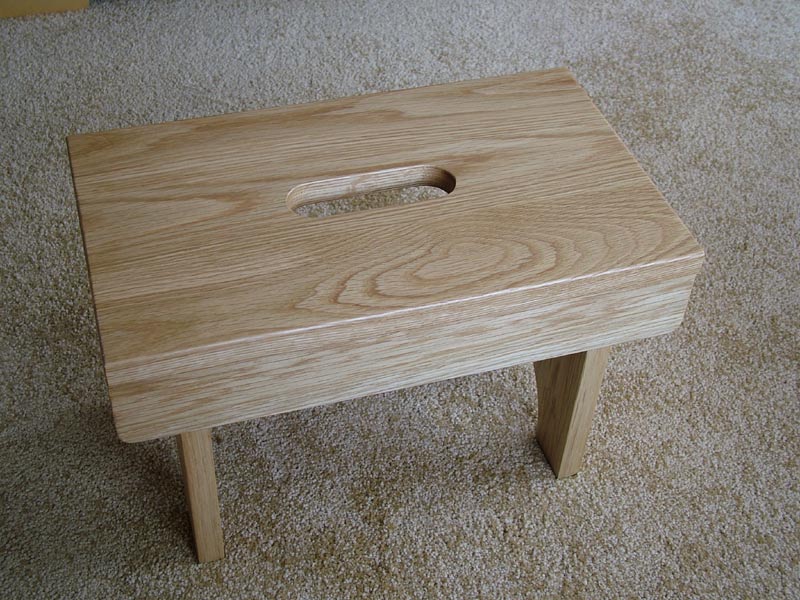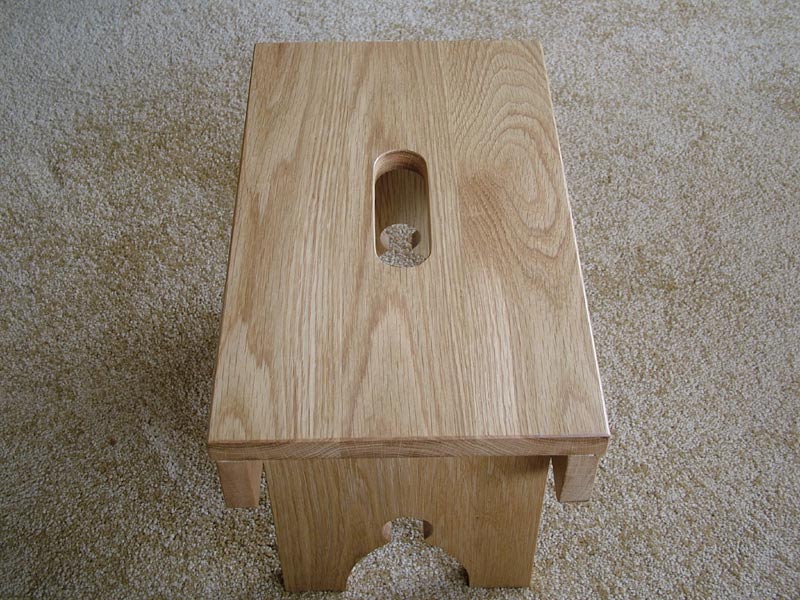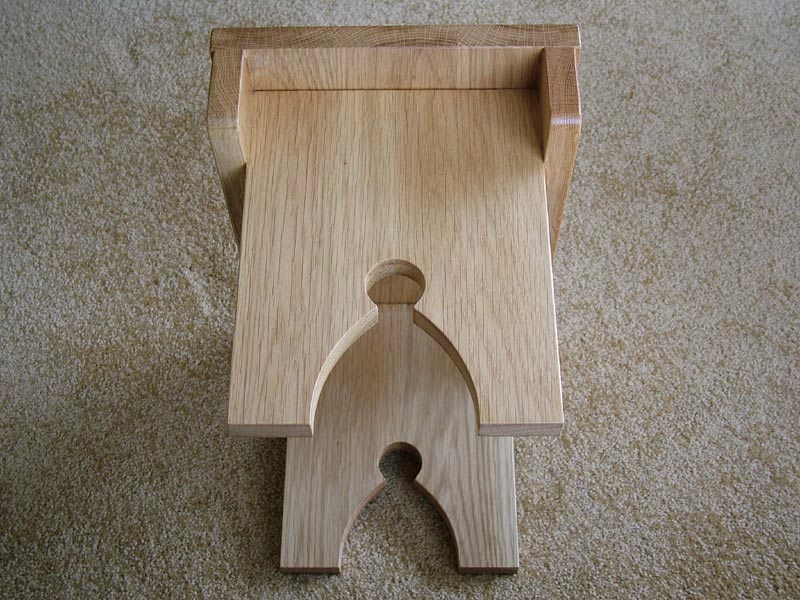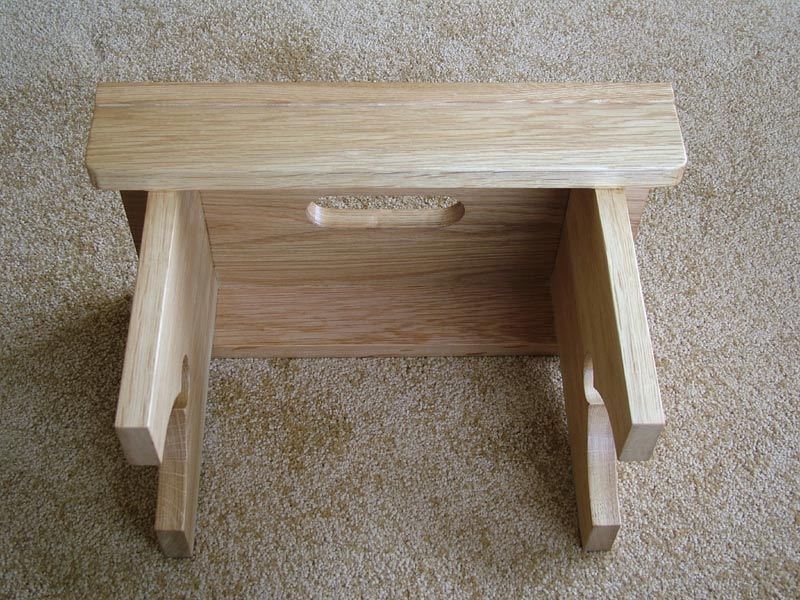An Orkney ‘Creepie’
Since we came to
Orkney I have been doing quite a lot of woodwork, mainly on alterations and
improvements to the house with the newly laid out workshop. In the workshop down in
I attended a woodwork evening class in Stromness a
while back and made a small Orkney
Chair and in the process found a local supplier of American light oak and
have made a few other things from this very pleasant looking wood. The chair still needs the straw work doing –
but that’s another evening class!
I decided to have a go at making a '
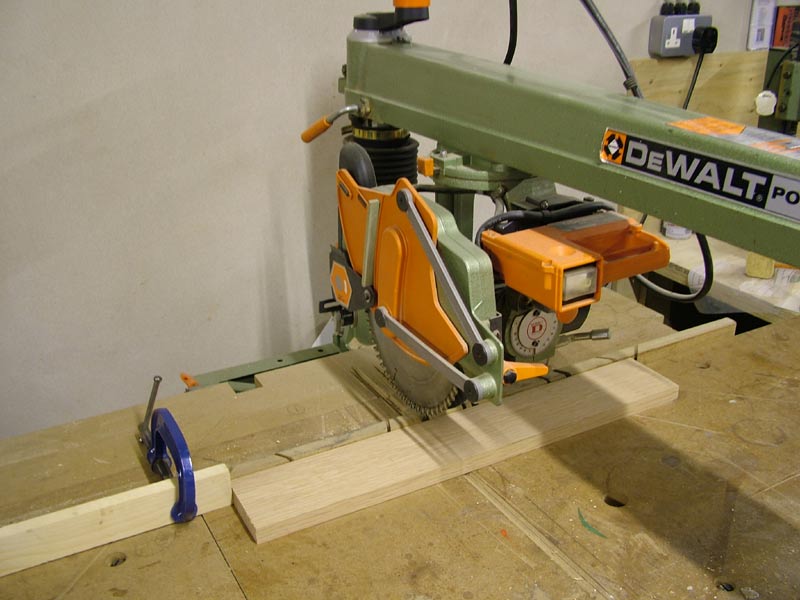
This is the setup for ensuring all of the pieces ended up the same length.
I've had the DeWalt Power-shop radial arm saw for many years and it has proved to be a really useful addition to any workshop. I bought it from a disposal sale of equipment in about 1996 and it had hardly even been used.

Using the Startrite Band-saw soon brought the pieces to the required widths. The band-saw was given to me by my former neighbour and great friend David Howard after he downsized his workshop a few years before retiring. It's a fantastic piece of kit and is so versatile - I think it gets used most days.
The top of the creepie is made from 3 pieces of 80mm by 20mm section oak about 400 mm long, the centre one being drilled and chopped out for the ‘handle’. I made sure that the grain was organised to give the best chance of maintaining flatness of the top, i.e. the outer two pieces are ‘cup down’ and the centre one, ‘cup up’. My sash cramps have a wooden beam, so it’s also necessary to lay a piece of polythene between the glued up joints and the beam – I wouldn’t want to have a creepie with permanently attached cramps! The joints are simply rubbed and cramped, but with added precaution of using plastic blocks and G cramps to keep everything level. The two upright ends are similarly constructed, but with only 2 pieces each.
As a detail I used the hole saw to remove a piece and then drew around a large tin to make up the shape shown for the 'legs'. The band-saw soon removed the waste and then a home made sanding drum in the pillar drill cleaned up the edges.

This is the home made sanding drum in action on another job in oak. There is a description of it's manufacture in the workshop projects section.
The two
‘stretcher’ pieces are dowelled and glued to the ends using 6mm dowels with the
aid of centring pegs (made on the lathe from a scrap end of stainless bar)
The top is
similarly fixed to the frame after each piece was carefully hand sanded,
starting with 80 grit paper along the grain and working progressively finer to
320 grit.
After final assembly the whole thing was then treated with 4 coats of Danish Oil, rubbed down with grey scotch pads between coats to get a very durable and pleasing finish.
